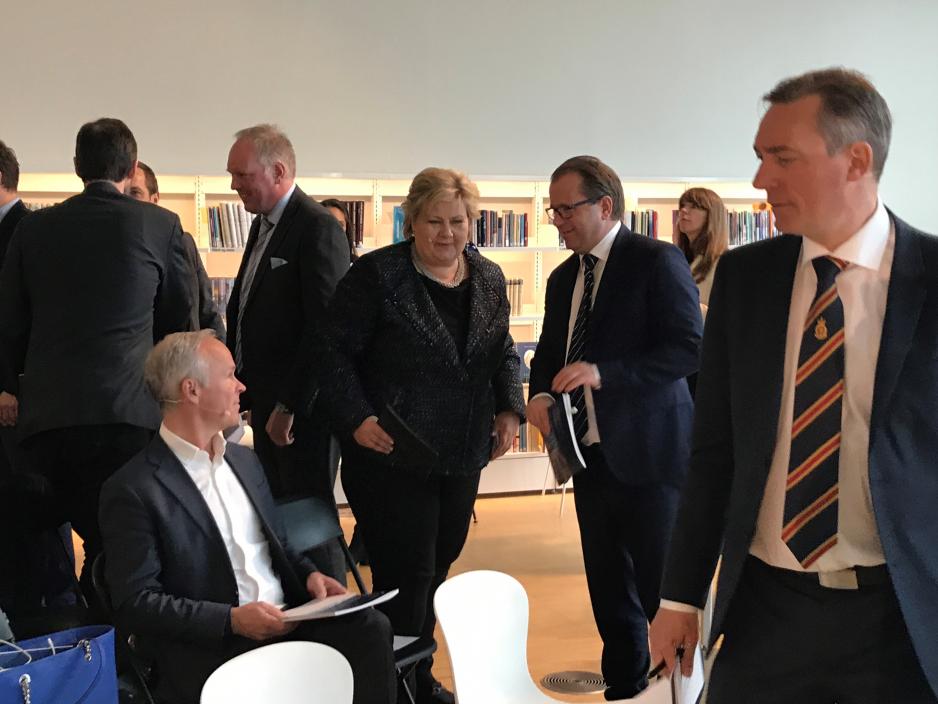Editorial comment: Northern Norway is the solution – not an opportunity

I feared the worst when a prime minister and three government ministers the other day described Northern Norway as 'the land of opportunity', a curse repeated indefinitely since then 1970s.
Today the same politicians took the stage in Bodø, Norway, and removed the worst part of that fear. Northern Norway is not an opportunity. It is the solution.
It is all about the Norwegian government's new High North Strategy, which was launched today. A 68-page document subtitled 'between geopolitics and developing society'.
A national project
The strategy was unveiled with Prime Minister Erna Solberg in the lead, followed by Foreign Minister Børge Brende, then Minister of Local Government and Modernisation Jan Tore Sanner and, finally, EU and EEA Minister Frank Bakke Jensen.
Not to standing ovations.
The High North Strategy has been mulled over too many times already for that to happen, since Jonas Gahr Støre (Labor) brought the strategy thoroughly into civil society, following an idea by former Foreign Minister Jan Petersen (Conservatives).
Nevertheless, the strategy was presented and received polite applause, as is suited for a presentation with speakers from the line of Conservative members of government.
The Progress Party's ministers were not present, despite the fact that they manage both the fisheries and transportation policy, two areas that were emphasized as important parts of the High North Strategy today. The variety among those present at Stormen Library in Bodø, Norway, nevertheless reflects the contents of the new strategy in a good way.
International market
The Prime Minister's presence emphasizes that this is a national project, not a regional political tool. Northern Norway is defined as an engine of the future national economy.
The fact that the rest of the country hardly notices this is problematic, however, also to live with.
The Foreign Minister stressed that the new strategy is also a geopolitical and international project. As did the minister for the EU and the EEA.
On the one hand, it is about both security politics and international cooperation in the north. That is a cornerstone. Northern Norway shares borders with Russia, also when the going gets tough. The North Norwegian population is the guarantor for a continued peaceful development in the High North.
On the other hand, it is also about an industry with a strong international focus. It is about market access, about customs rates and trade agreements. According to speculations in the Norwegian daily VG, Jonas Gahr Støre (Labor) considers closing down the EU Department should he become prime minister. That may be a poor idea if he consults businesses in the north.
From strategy to action
The new, major initiative, which in reality was launched by Prime Minister Erna Solberg early on, is bringing the Ministry of Local Government and Modernization into the game. This is a solid initiative, in particular because it involves the regional level in the north.
It permeates the new strategy document in a good way.
The significance of the regional competence, be it about political institutions, knowledge institutions or the industry, is made visible and included in the national shaping of politics and policies.
However, it also represents a challenging move seen from a regional point of view. It preconditions both the ability and the competence to deliver to the strategy that has been outlined now.
For the present document is a strategy, not an action plan with all the funding provided.
Which is why the description of the region's challenges may be the most important part of the strategy. It hits close to home in its description of a region where population figures turn from growth to decline. Any growth that may still exist, and that is nevertheless argued in the strategy, is due to immigration. And that immigration has halted, not least as a result of the government's politics.
A correct description
The strategy describes a biased gender balance, in particular due to lack of high-competence jobs. The latter is also a key feature of the description of Northern Norway.
It furthermore describes another consequence: Women, in particular those with high levels of education, choose their permanent residence outside the region.
It describes a population where the average age increases dramatically.
These characteristics also limit the nation's opportunities to benefit from a future economic growth in the High North.
This is why the new High North Strategy is a good platform for delivering initiatives and measures that strengthen local businesses, communities and knowledge institutions.
At the same time, the strategy invites a political fight over which measures and initiatives that are required in order to achieve the long-term goals.
Many will warrant new measures in the government's High North Strategy; nevertheless, that is not necessarily the way to renew strategy plans.
The most important part is their being fulfilled.
Industry on the sideline
Exploiting the potential that lies in living in a part of Norway that is found worthy of its own, national strategy is the most important thing.
It is important for the nation.
This, in contrast to the southeastern inland region, where the only mobilizing force appears to be resistance against the local wolf population.
A lot of work remains, in particular in the industrial sector. So far, oil appears to be the only thing placed at the core of the economic growth.
I know a lot of North Norwegian industry leaders who will use the new High North Strategy to claim that they are the solution to many of the challenges, as long as the conditions for further growth are established.

